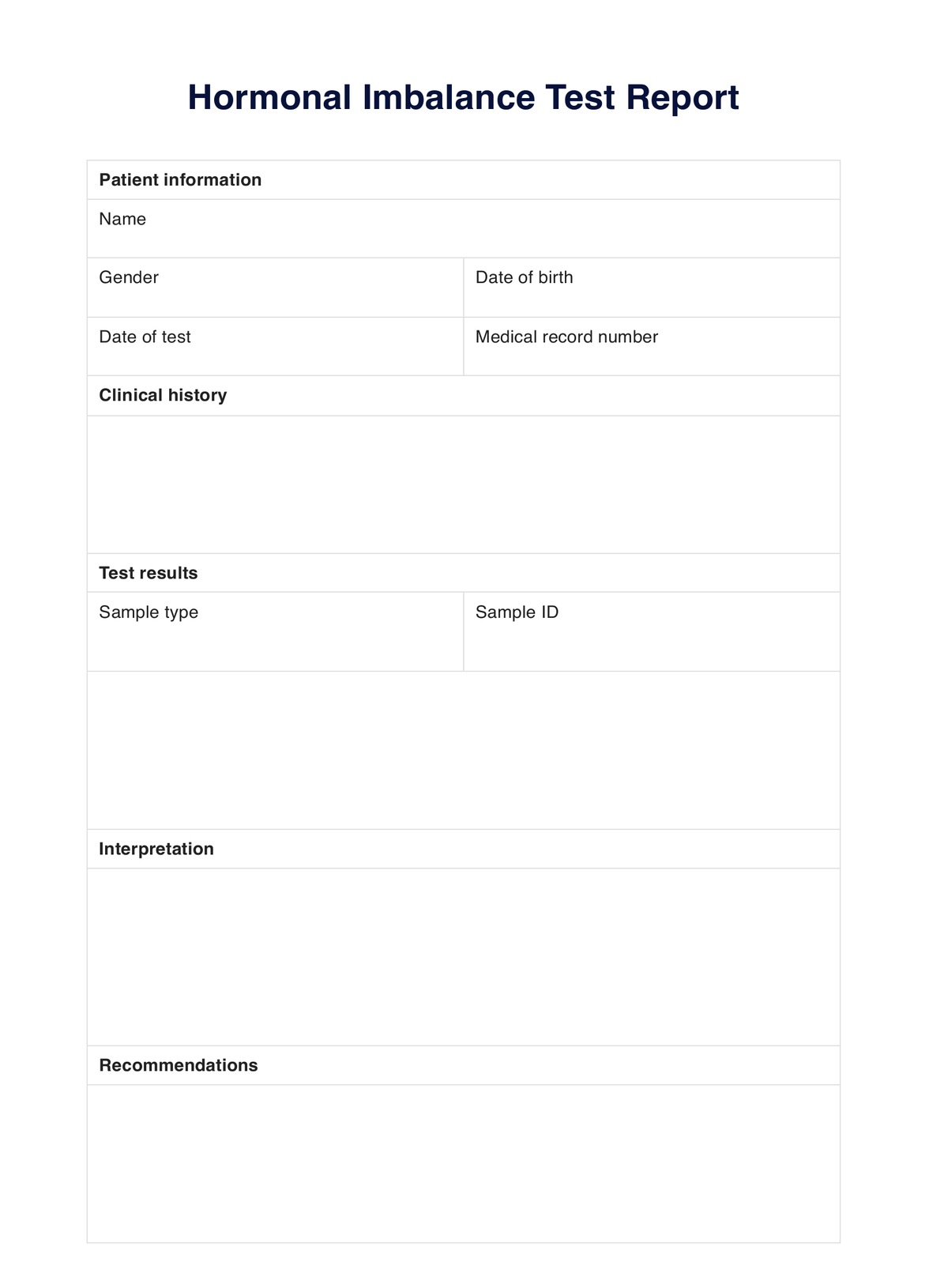A Hormonal Imbalance Test may be requested by a primary care physician, endocrinologist, or gynecologist to evaluate hormone levels and overall health.

Hormonal Imbalance Test
Get a free Hormonal Imbalance Test Report template and an example for reference. Learn about the importance of this test and how to interpret results.
Hormonal Imbalance Test Template
Commonly asked questions
Hormonal Imbalance Tests are typically used when there is suspicion of a hormone imbalance or to monitor treatment for conditions such as PCOS, adrenal tumors, or other hormone-related disorders. They may also be part of routine health check-ups, particularly for postmenopausal women and men over 50.
The test itself typically takes just a few minutes, but the entire process may take up to an hour, depending on factors like sample collection and processing time. Results are usually available within a few days.
EHR and practice management software
Get started for free
*No credit card required
Free
$0/usd
Unlimited clients
Telehealth
1GB of storage
Client portal text
Automated billing and online payments











